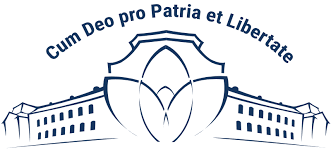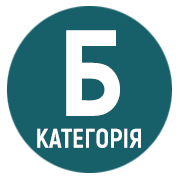CASTLES IN HUNGARY: UTILISING OUR BUILT HERITAGE TO CREATE VALUE
DOI:
https://doi.org/10.32782/2786-5843/2023-2-1Keywords:
cultural tourism, heritage tourism, castles, HungaryAbstract
Our study deals with a comprehensive analysis of the current situation and possible uses of castles in Hungary. The aim of the study is to explore in detail the challenges and opportunities of castles in Hungary and how these buildings can be integrated into modern society while preserving their historical and cultural values. Particular emphasis was placed on the importance of sustainable use and how castles can contribute to the economic and cultural life of local communities. The research used a variety of methods, including literature review, personal site visits and website analysis, in order to provide a broad analysis of the topic. The results were used to formulate recommendations that could promote a more effective and versatile use of castles. These include alternative functions to tourism, such as education and research centres, art workshops, community spaces, and economic and cultural incubators. Our analysis also highlights the role that castles can play in preserving local identity and cultural heritage. The research contributes to a better understanding of the current situation of Hungarian castles and to the development of strategies for their future use. Our study highlights that properly exploited castles can not only enrich cultural tourism but also contribute to improving the quality of life of local communities. The results of our research can help policy makers, heritage professionals and castle managers to develop sustainable and economically viable exploitation strategies.
References
Csapó J., Matesz K. (2007): A kulturális turizmus jelentősége és szerepe napjaink idegenforgalmában (The importance and role of cultural tourism in today’s tourism). In: Földrajzi Értesítő 2007, Vol. 3-4, pp. 291-301
Csapó, J. (2012): The role and importance of cultural tourism in modern tourism industry. In: Kasimoglu, M. (ed.): Strategies for Tourism Industry – Micro and Macro Perspectives. Tech Open Access Publisher, Rijeka, pp. 201-232
Dávid L. D., Jancsik A., Rátz T. (2007): Turisztikai erőforrások: a természeti és kulturális erőforrások turisztikai hasznosítása (Tourism resources: the use of natural and cultural resources for tourism). Perfekt Gazdasági Tanácsadó, Oktató és Kiadó Zrt.
UNWTO (2019): Tourism Definitions. https://www.e-unwto.org/doi/epdf/10.18111/9789284420858
Rátz, T. (2011). Kulturális turizmus (Cultural Tourism). In. G. Michalkó (ed.), PTE, 2011
National Tourism Development Strategy 2021-2030. https://www.edutus.hu/wp-content/uploads/2020/10/Nemzeti-Turizmusfejlesztasi-Stratagia-2030.pdf. Download date: 2023.04.10
Szimándi Sz., Benkei-Kovács B. (2018): Tudástár a közösségi művelődésben, XII. kötet, Kulturális turizmus (Knowledge Base in Community Culture, Volume XII, Cultural Tourism). National Institute for Cultural Heritage
McKercher, B., Ho, P. S. Y., Du Cros, H. (2005): Relationship between tourism and cultural heritage management: Evidence from Hong Kong. Tourism Management, 26, pp. 539-548
Papp-Váry Á. (2013): A márkanév ereje – Szempontok a sikeres brand építéshez (The power of branding – Considerations for successful brand building). Dialóg Campus, Pécs-Budapest
Ercsey I. (2019): „Közös az értékteremtés a kulturális szektorban?” (ˮIs value creation common in the cultural sector?ˮ). Marketing & Management, 48(3), pp. 36-46
Vincze, D. (2019): „Élmények a fiatal fogyasztók közösségi média posztjaiban” (ˮExperiences in the social media posts of young consumersˮ). Marketing & Management, 53(Special Issue), pp. 57-68. DOI: 10.15170/MM.2019.53.EMOK.06
Priatmoko, S., Kabil M., Vasa L., Pallás E. I., Dávid L.D.(2021): Reviving an Unpopular Tourism Destination through the Placemaking Approach: Case Study of Ngawen Temple, Indonesia, Sustainability, 2021, 13, 6704. DOI: https://doi.org/10.3390/su13126704
Richards, G. (2021): Emerging cultural tourism practices: new opportunities for small cities, Tourism and Rural Development Studies, 6(4)
Szalai K., Michalkó G., Rátz T. (2023): A turizmus válságjelenségei (The crisis phenomena of tourism). Kodolányi János University, Székesfehérvár
Richards, G. (2016): The challenge of creative tourism, Ethnologies 38(1-2), pp. 31-42
Gonda, T., Rátz, T. (2023): Attitudes and actions in responsible tourism – An analysis of generational differences. Geojournal of Tourism and Geosites, 2023, 46(1), pp. 234-242, DOI 10.30892/gtg.46126-1020
Katona, J. (2021): A hazai kastélyhasznosítás problémáinak elemzése, különös tekintettel a Dél-Dunántúli Turisztikai Régióra (Analysis of the problems of castle utilization in Hungary, with special regard to the South Transdanubian Tourism Region). PhD-thesis, University of Pécs, Faculty of Natural Sciences, Doctoral School of Earth Sciences
Petravich, A. (1996): Veszélyeztetett kastélyok és középületek helyreállítása (Restoration of endangered castles and public buildings). In: Császár, L., Hokkyné, S. M., Holler, M. & Mendele, F. (szerk.), Magyar Műemlékvédelem 1980-1990, pp. 231-268. Budapest: Akaprint Nyomdaipari Kft.
Praznovszky, H. (2005): A kastélyhasznosítás problémái Magyarországon (The problems of castle exploitation in Hungary). Turizmus Bulletin, 9(3), pp. 49-60
Nagy, A. (2011). Kastélyok és TDM Észak-Magyarországon (Castles and TDM in Northern Hungary). In: Hanusz, Á. (szerk.): A helyi TDM szervezetek szerepe a desztináció turisztikai kínálatának fejlesztésében, pp. 103-120. Debrecen: Kapitális Nyomda.
Fejér County Regional Development Concept 2030 https://www.fejer.hu/media/65/fe/56/da96f522cd.pdf downloaded on: 2023.06.11
Bichler, B. F. (2021) Designing tourism governance: the role of local residents. Journal of Destination Marketing & Management, 19. 100389
Marton, G., Raffay, Z., Varga Szalai, K., Barcza, A., Gonda, T. (2021): Specific problems of tourism development in the Hungarian Areas of the Drava Region/Podravina, 2021, 20(39), pp. 179-191
Aubert, A., Csapó, J. (2002): Unique Features of the Tourist Attractions in Hungary's Historical Small Cities: Settlement Dynamics and Its Spatial Impacts. University of Pécs, Department of Tourism, pp.137-147
Berki M., Gonda T. (2006): A kulturális turizmus magyarországi városi helyszíneinek pozicionálása (Positioning urban sites of cultural tourism in Hungary). Földrajzi Értesítő, 2006, Vol. LVF, 1-2, pp. 127-140
Katonáné V.B., Kunstár, B., Szekeresné, H.Zs., Szmolkáné B.I., Szverle B., Viszló B. (2019): Florianától Csákvárig-A Vértes fővárosának története napjainkig (From Floriana to Csákvár – The history of the capital of the Vértes to the present days). Municipality of Csákvár, 2019.
El Archi Y., Benbba B., Nizamatdinova Z., Issakov Y., Vargáné G. I., Dávid L. D. (2023): Systematic literature review analysing smart tourism destinations in context of sustainable development: current applications and future directions. Sustainability 15(6), Paper: 5086, pp. 1-15. DOI: doi.org/10.3390/su15065086






